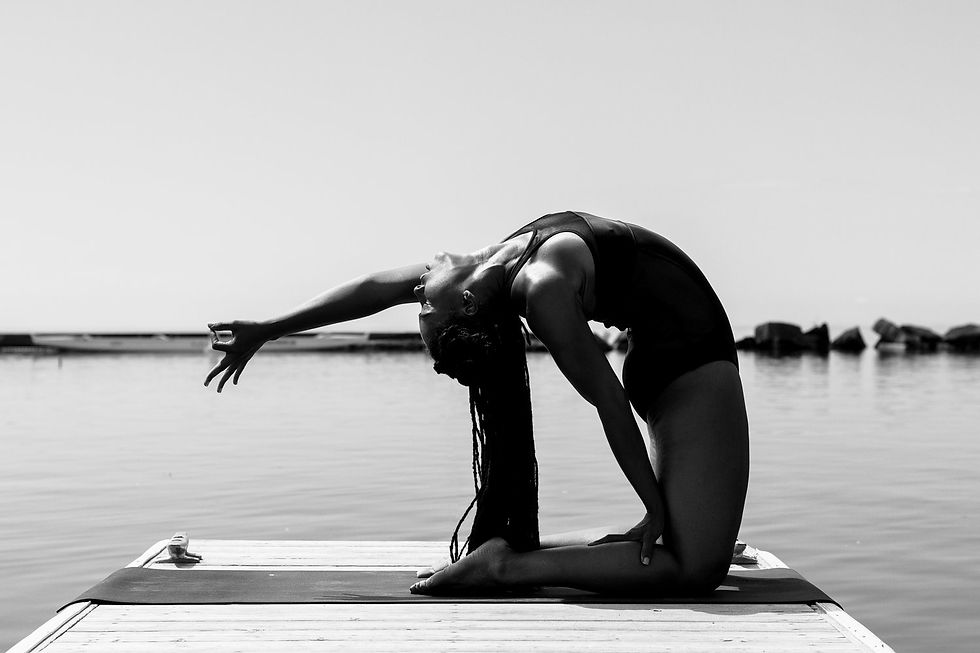Meditate through pandemic fear
- covidcationpodcast
- May 26, 2020
- 3 min read
by Tracey Bowers-Lee

Photo credit: Patricia McPherson's personal webpage
With all the new realities of the COVID-19 pandemic, managing anxiety about the one thing we all need to survive – breathing – being the one thing that could kill us, how do we deal with it?
Our mental health can be a silent victim. Many of us are stressed, really stressed, and it has led to sleepless nights and negative thoughts.
Yoga student, Catlin MacLean, is 23-years-old and said yoga has gotten her through some tough times. She said it helps with sorting out frustration and compartmentalizing pandemic feelings.
“I was going through a pretty rough patch feeling pretty, like, depressed, low, anxious, and whatnot. And going to yoga, specifically hot classes, kind of reminds me that, like, just keep going on. Keep moving on, keep doing it,” said the Oshawa native.
She said yoga is a practice you can do at any time of the day to alleviate the stresses of whatever is happening in your day. The good thing about being home and accessing the exercise online is you can do it in your own space, said MacLean.
“Put all your effort into it and then at the end of class, you can just relax.”
She said if you are dealing with heavy thoughts on your mind, by the end of the class they’re released, and this builds up mental strength. It helps the student process “different emotions and situations in the moment, rather than dealing with them in a more destructive way.”
Toronto-based yoga and meditation instructor Patricia McPherson said yoga is meditation in movement and it can help us through our emotions, but we have to make a conscious choice to let go of those negative feelings.
She said it takes 90 seconds for emotions to come into our bodies and for us to experience and process them, but instead, we let them fester.
“We, as people, hold onto these emotions for decades. Emotions are visitors. They just come, they knock, we let them in, they say what they got to say, and then we're supposed to show them out, but we don't. We invite them over, we make them a meal, we invite them to stay over, we start giving them money. It's a whole thing, we make them a part of our family. It’s a whole thing,” said McPherson.
She said with yoga and meditation we become observers of our emotions and learn they are only temporary. Our suffering comes from how we choose to respond and how we choose “to handle these visitors.”
McPherson explains that, with the stay at home and social distancing guidelines, we are all having difficulties staying still.
“We always have to be somewhere, we always have to do something, we always have to call someone, we always have to put on a hat and play a role.”
She said we all have dynamic cultures and sometimes we get confused about our authentic selves and what our true space is in the world.
“It's not easy to sit with yourself in stillness and confront all of these things that are going to come up. You know, there's a traditional Chinese saying that said, ‘you can only see yourself when the water is still. When the water is rushing, you can’t see a reflection of who you are. When the water is still then you can see who you are.’ And that encompasses meditation and yoga,” said McPherson.
We are all in a place right now where our futures are on hold. She said we all have to find our own coping mechanisms and tap into them to get through this pandemic.
“We're all at home right now. We're kind of stripped naked of all of what we thought. Every last being in the world is questioning what they thought about themselves in the world because we don't have the world to be this energy or to carry these energies,” said McPherson.
“We're kind of in our own world and it's hard. It is hard. Come on, it's even hard for us. But yoga and meditation is a coping method, and people have to find coping methods to make you feel at peace with what's happening now.”









Comments